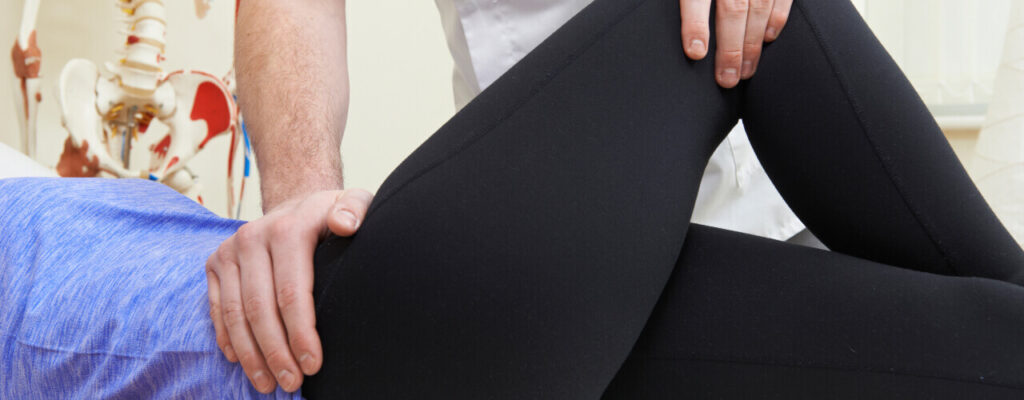Got Hip & Knee Pain? Physical Therapy Can Help You Move With Ease Again

Are you experiencing debilitating hip or knee pain? If the answer is yes, then you know how much it can get in the way of your life. There are so many causes of hip and knee pain, from excess weight to sports injuries, advancing age to repetitive motion injuries.
Whatever the cause of your hip and/or knee pain, if you are experiencing it regularly you need to find a way to manage it. Unaware of how harmful medications are, many people use anti-inflammatories to minimize their discomfort.
However, these medications do have potentially harmful side effects, so it can be helpful to find other ways to relieve your pain.
Physical therapy may be the solution you are looking for. Contact our clinic today to learn more.
What is the goal of physical therapy for hip and knee pain?
Physical therapists are skilled movement specialists who know how to determine the underlying cause of your pain and treat it at the source. They also know how to educate patients on how to manage their pain at home as well.
A major goal of your physical therapist is to heal your injuries over time. The various exercises and treatments they use with you will steadily improve your condition so that you experience less pain daily.
As your body gets stronger and more mobile, you are likely to experience less pain in your hips and knees.
Physical therapy treatment methods
If your doctor has told you to take pain relievers every day for your hip and/or knee pain, you should certainly follow your doctor’s recommendations! However, it can’t hurt to ask about alternative pain management options such as physical therapy.
Working with a physical therapist can help reduce or eliminate your pain in a variety of ways, including:
- Strength exercises. Physical therapy centers around specific exercises designed to target various muscles and strengthen them so that they better support your joints.
Loss of muscular strength can contribute significantly to hip and knee pain because the weaker your muscles get, the more stress is put on your joints. - Ultrasound therapy. Ultrasound is used by physical therapists to apply heat deeper into your soft tissues to provide pain relief. The heat can improve circulation and aid in healing, which can ultimately reduce the pain you experience day to day.
- Cold and hot therapy. Ice can be used to lessen pain from your hip and/or knee as well as to reduce inflammation. Heat can be used to improve your mobility and decrease the amount of pain you are experiencing so that you can move more freely.
- Determine the root of your pain. There may be one or several reasons why you are experiencing hip and knee pain, and a physical therapist can help with that.
They can examine your movement to help identify things that are contributing to your pain, such as poor posture, unhealthy walking patterns, or unhealthy movements you make daily. Once they identify these kinds of issues, physical therapists can tell you how to correct them. - Exercises to improve mobility and flexibility. Hip and knee pain can lead to loss of mobility and flexibility – which then increases the wear on your joints and leads to even more pain.
Physical therapists can take you through exercises to improve your mobility and flexibility so that you can move your limbs and joints in the fullest range of motion that is available based on your body and circumstances.
What you can expect at a physical therapy appointment
Physical therapy has been proven as one of the most effective treatment methods for knee and hip injuries. This has been demonstrated through several research-based studies, including a 2014 study published by the Journal of American Medical Association.
The study, titled “Effect of a Home-Based Exercise Program on Functional Recovery Following Rehabilitation After Hip Fracture,” focuses on the benefits of exercise programs for those recovering from hip fractures. In this study, patients were split into two groups.
The intervention group received “functionally oriented exercises (such as standing from a chair, climbing a step) taught by a physical therapist and performed independently by the participants in their homes for 6 months,” while the other group simply received education on cardiovascular nutrition and recovery.
Results from this study concluded that those participating in the in-home physical therapy exercise programs demonstrated “modest improvement in physical function at 6 months after randomization.”
Statistics aside, the main takeaway here is that our licensed physical therapists are movement experts whose job it is to help you move safely and comfortably. They will analyze how you walk to determine any abnormalities and to pinpoint stiff or weak muscles.
By pinpointing the exact parts of your body that are restricted or not moving as they should, they can create a treatment plan that will improve your strength, coordination, and overall mobility.
Are you ready to feel true relief, once and for all?
Our dedicated team can help you walk, run, and play better. With our motion analysis, strength testing, coordination testing, and more, we can spot your muscles and joints that require treatment.
Restoring normal motion is a key aspect to alleviating pain and allowing you to safely partake in the activities you love. Rest assured that your treatment plan will be individualized, based on your specific needs, to help you reach your optimum function with the least amount of effort.
Call Schuster Physical Therapy today to schedule an appointment with a physical therapist for your hip and knee pain. We are eager to meet and help you!
Sources:
- Overview of Therapeutic Ultrasound Applications and Safety …www.ncbi.nlm.nih.gov › pmc › articles › PMC3810427
- https://pubmed.ncbi.nlm.nih.gov/24549550/



